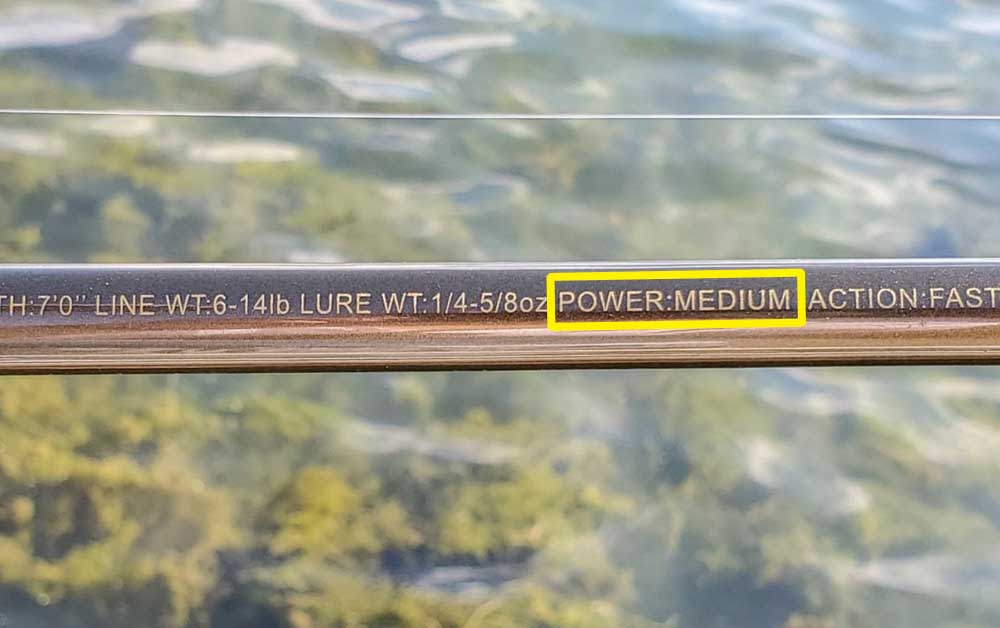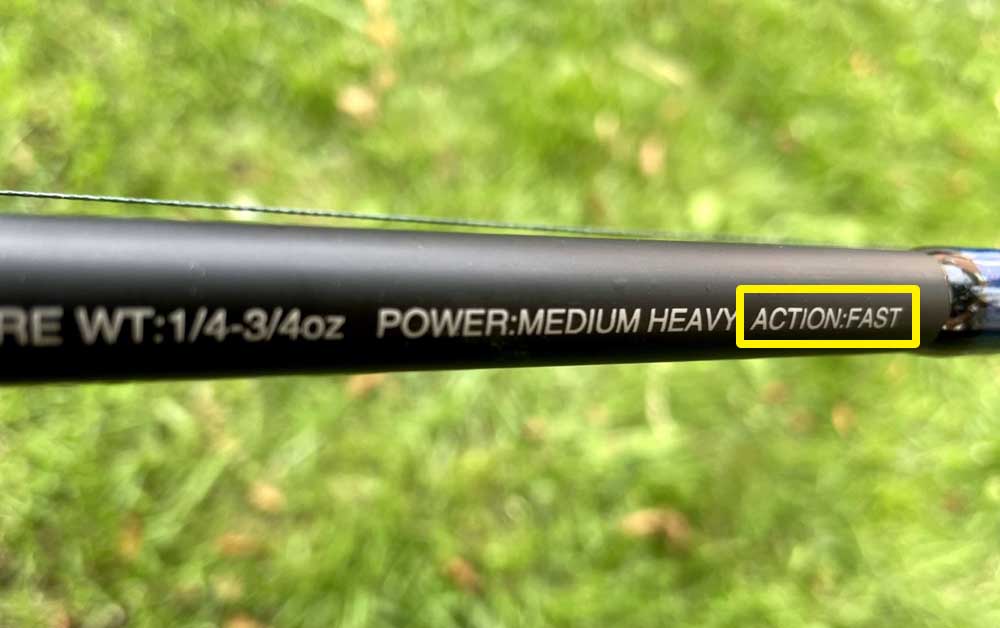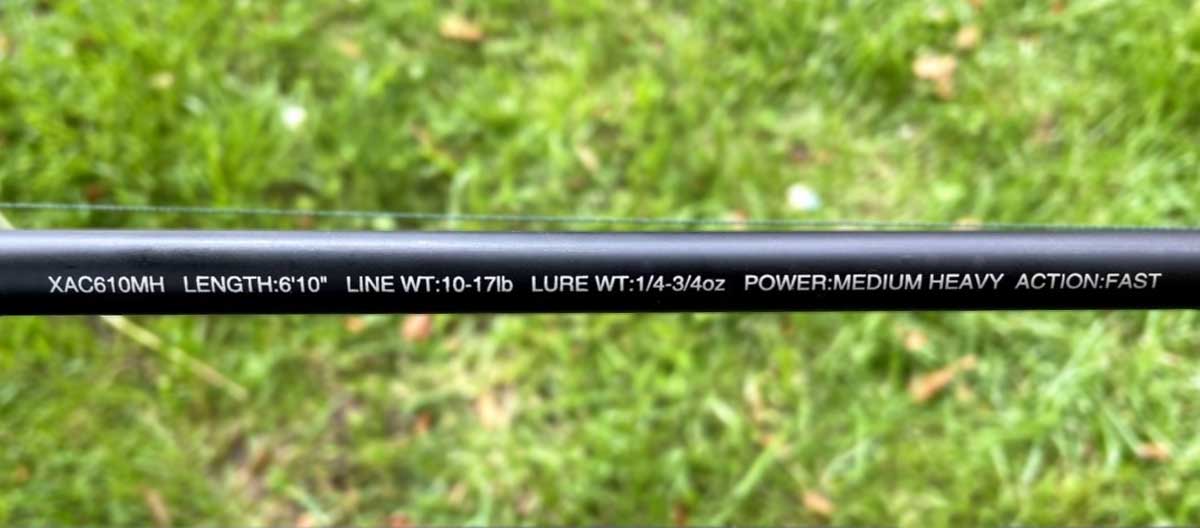Rod Action, Power and Preferences
Fishing rod action and power refers to how much strength, resistance, flexibility, and sensitivity a rod has. A basic rule of thumb when it comes to power and action is this: the smaller your baits, lures, weights, and targeted species, the lighter and more sensitive/flexible your rod should be. Likewise, the bigger your baits, lures, weights, and targeted species, then the heavier, stronger, and more rigid your rod’s power and action should be.
Rod Power
A rod's power indicates its strength, how much pressure it takes to bend, and how much weight/stress it can handle. Power is predominantly concentrated and felt in the back half of a rod. It is typically indicated or measured is as follows: Ultra, Light, Medium, Heavy, or Extra Heavy.

Note: The power of the rod is always indicated on the rod before the action of the rod.
Ultra and Light powered rods: They seem flimsy and noodle-like compared to medium and heavy rods. It doesn’t take much weight or pressure to bounce and bend them. These rods give you an obvious advantage when it comes to feeling and controlling jigs or lures that weigh as little as 1/32 oz. to ⅜ oz. Needless to say, ultra and light rods make fishing for smaller species (like panfish, perch, crappie) simple and fun.
Medium and Heavy powered rods: These rods are much stiffer and rigid compared to ultra and light-powered rods. They are quite versatile in their ability to handle heavier lines, lures, weights, and fish. Since they're much more rigid and resistant, they have an edge in handling and controlling those bigger lures and fish.
Rod Action
The action of your rod affects the action of your bait and lures more than anything. It tells you how much sensitivity is in the top half and tip of your rod. This indicates how flexible this section of the rod is and where along the rod it begins to bend and flex. Slow action rods begin to bend and flex closer to the middle of the rod. They are more forgiving and flexible in the lower section of the top half of the rod and have a softer tip than fast action rods. Fast action rods on the other hand, flex and bend closer to the tip of the rod. In addition to having more flexibility and sensitivity at the tip, they are also a little more rigid in the top section.
Typically, the bigger the fish and lures, the slower the action of your rod should be. The smaller the fish and lures, the faster the action of the rod should be. Ultimately, the species of fish, environment you'll be fishing, and technique you'll be using, all influence the rod you need in terms of power and action.
The way the action of a rod is indicated is as follows: Light/Fast, Medium or Heavy/Slow.

Ultra-Light/Fast action: not very powerful and are very sensitive (fast) in the top half of the rod
Heavy/Slow action: very powerful with a stronger and more rigid action in the top half of the rod
Medium action: all medium action rods between the two are great for small as well as big fish
A Medium-Light/Fast action rod provides more sensitivity at the tip of the rod while a Medium-Heavy/Slow action rod is more rigid. However, both types of rods are versatile and capable of handling different sizes of lures and fish.
Combined Power and Action Indicators
The power and action of a rod combined are printed as: Ultralight/Fast, Light, Medium-Light/Fast, Medium, Medium-Heavy/Slow, Heavy, Extra-Heavy/Slow.
As you gain experienced you will also gain a better understanding of the benefits of different power and action combinations. Most importantly, you’ll know exactly what power and action you’ll need for the variety of baits, lures, techniques and fish you’re targeting.
A couple of things to keep in mind when picking out your rods:
Follow the rod preferences listed on the rod.
The power and action of a rod work together as one.
What size baits and lures are you using?
Which technique are you going to be practicing?
What size fish are you targeting?
Rod Preferences
Line weight and lure weight: Your rod will tell you the weight of the line and the weight of the lure it is intended to be used with. If the rod indicates fishing line that is between 6-14 lbs, then that's the line you use. Similarly, if the rod indicates a lure or bait between ⅛ -⅜ oz, then that's what you use. It’s really as straight-forward and simple as that.

Following all of the rod specs will ensure that your rod, bait, and lures perform to the best of their ability. If you don’t follow these rod preferences exactly, it really isn’t too big of a deal when you’re just starting off. You will learn a lot about the rod and its actual capabilities as you gain more experience and experiment with it. The worst thing that can happen is you don't hook and land as many fish or you break your rod.
Note: Should you come across a rod that doesn’t contain this information, then I would advise against purchasing it.
